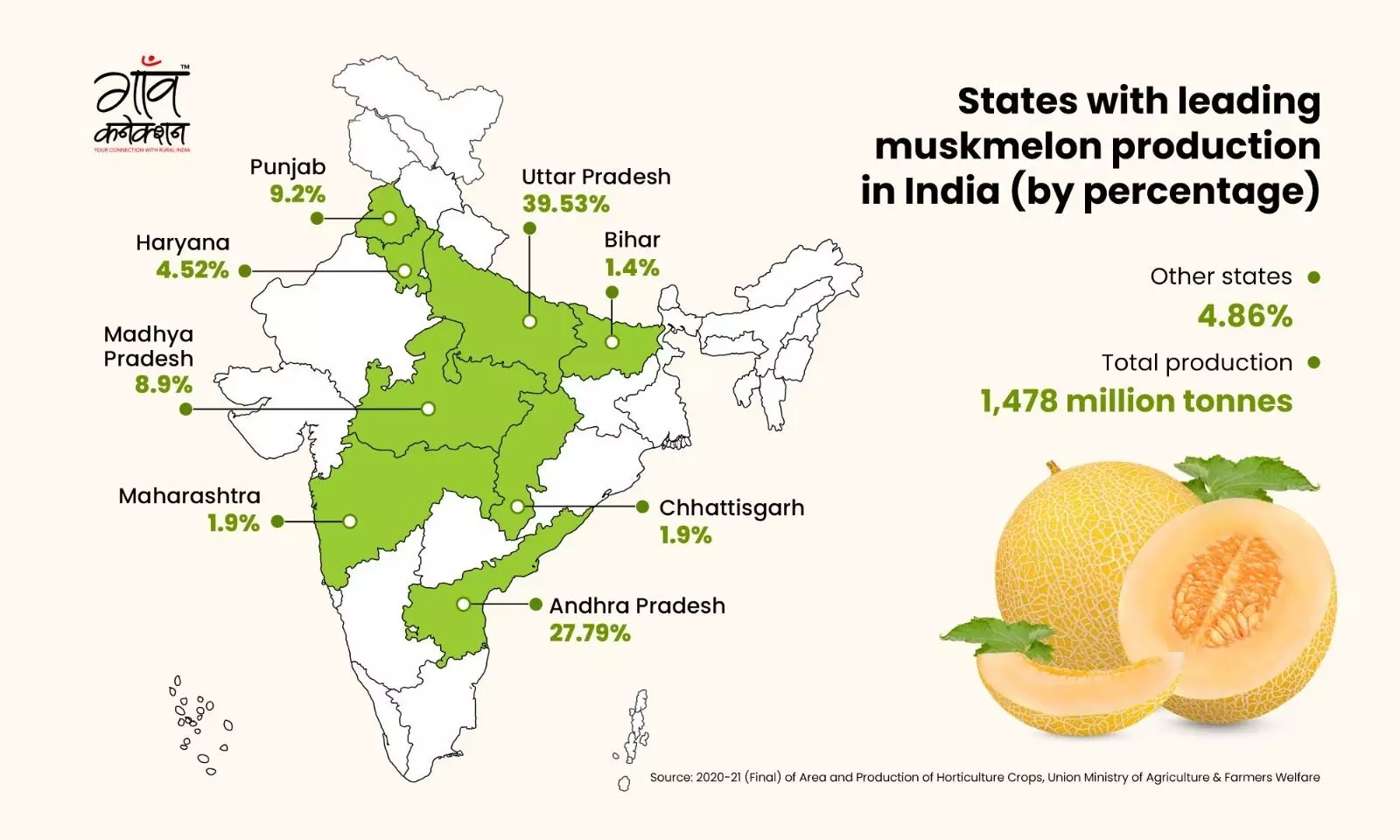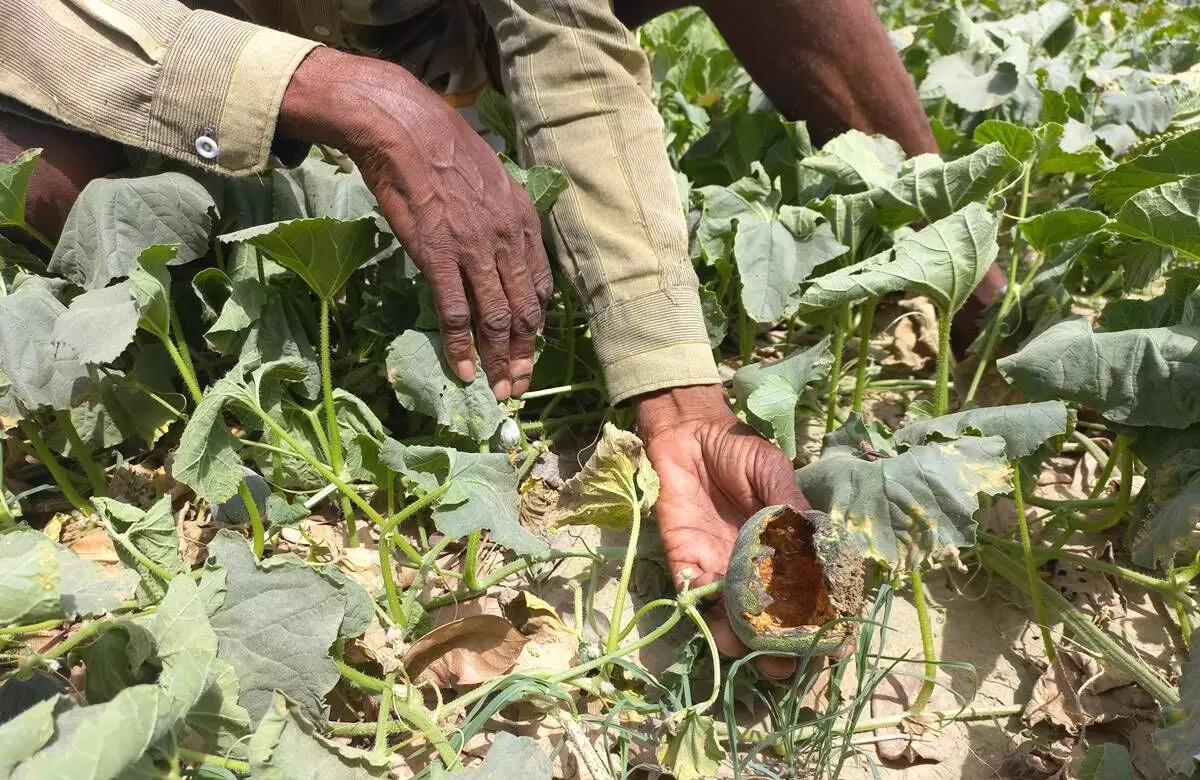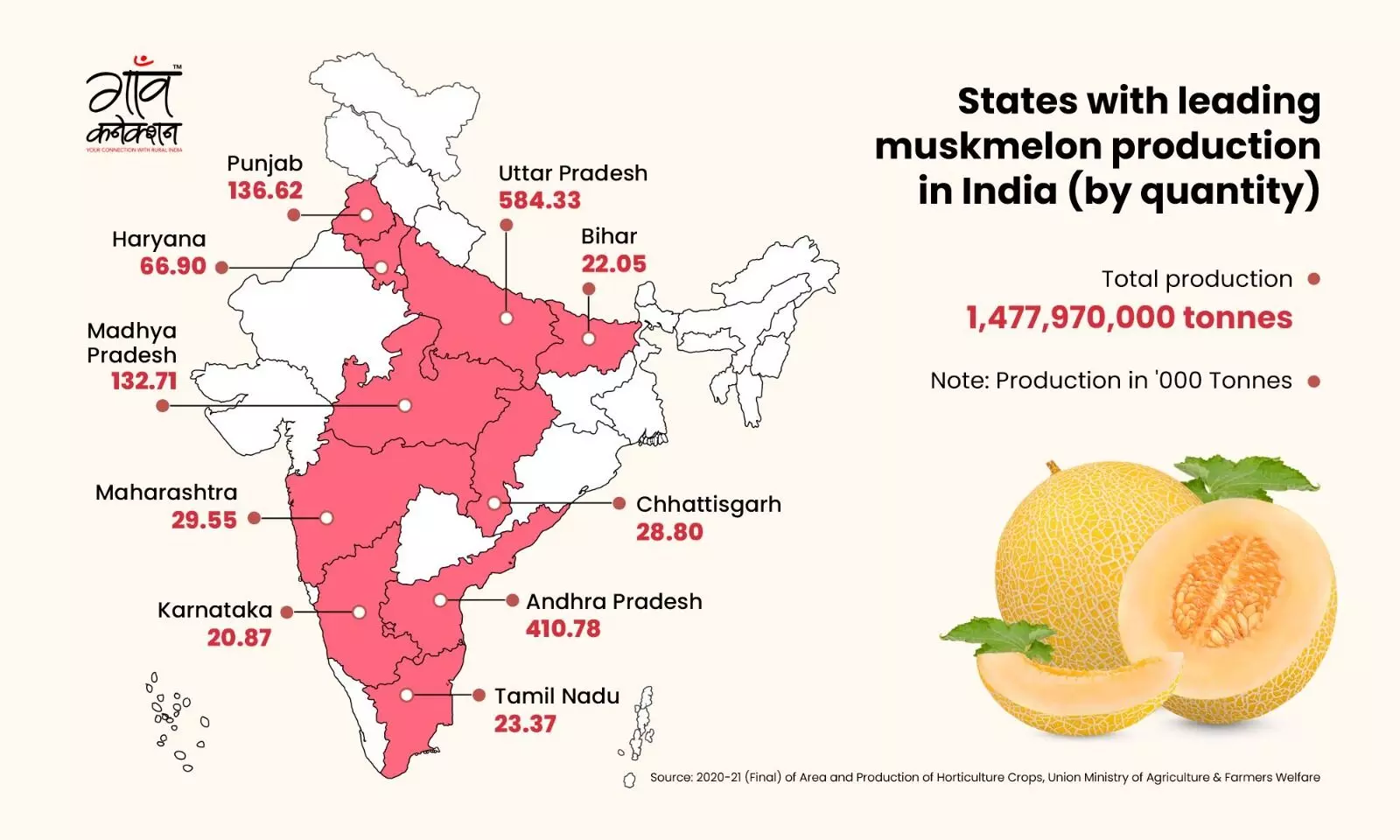Unnao, Uttar Pradesh
Lakshmi Kant had banked on his crop of muskmelons to conduct the wedding of one of his daughters, in a fitting manner. But all is not well and the 62-year-old farmer from Ramsingh Khera village in Unnao district is worried. The farmer is father to five daughters and three sons.
Heavy rainfall coupled with hailstorms in the first two weeks of May have destroyed his melon orchard spread across two bighas (half a hectare) of land.
“Just when the fruits needed sunshine, we had rain and hailstorms, and now the melons are rotting in the field. They should have been ripening and getting ready for harvest now,” Kant told Gaon Connection.
Muskmelon or kharbooza is a popular seasonal fruit relished across the country especially during the oppressive Indian summers. It is mostly grown in sandy soils found along the banks of the rivers.
Uttar Pradesh is the largest producer of muskmelon in India, contributing to 39.53 per cent [584,330 tonnes] of the total production in India which is recorded as 1,477,970,000 tonnes by the Union Ministry of Agriculture and Farmers Welfare in 2020-21.

The major melon growing states are Uttar Pradesh, Haryana, Punjab, Rajasthan, Madhya Pradesh, Andhra Pradesh, Maharashtra and Gujarat.
Thousands of farmers in Uttar Pradesh grow the fruit. Cultivated in the zaid season falling between the rabi and kharif crops, it is not a labour intensive crop. However, it requires substantial capital investment and farmers like Kant usually take loans in order to cultivate it.
“I had borrowed Rs 25,000 from a local sahukaar [moneylender] on an interest of four per cent on a monthly basis. There are a lot of expenses on pesticides, insecticides, fertilisers and soil treatment. I’ll have to repay the loan from my savings. It has been an absolute loss this year,” the farmer who supports a family of 10, said.
Also Read: Watermelon cultivation and a women farmers’ company script success in Bankura, West Bengal
Rains and hailstorms play spoilsport
According to a research paper titled Scientific Cultivation of Muskmelon (Cucumis melo L.) published in Biotica Research Today journal in 2020, high temperatures and low humidity at the fruit ripening stage enhance the sweetness and aroma of the fruits.

Infections and pest attacks are also on the rise as the heat is not enough to keep them in check
“Muskmelons are susceptible to frost but tolerant to drought. Muskmelons thrive best in loamy to sandy loamy texture of soil and the desired pH should be 6-7.5,” the paper mentioned.
Agricultural scientists blame the rains and hailstorms for harvest losses. According to Dheeraj Tiwari, an agricultural scientist at the Krishi Vigyan Kendra in Dhaura, Unnao, the heavy rainfall and hail storms in the district in the first two weeks of May brought down the temperatures which spoiled the crop.
“It is one of the few crops which grows well in the heat. Higher the temperature and hot winds, the sweeter the fruit will be. High temperatures also guard the crop against a lot of pests,” said Tiwari.
Also Read: Trapped in debt, melon farmers in Satna take on double the risk
Rise in pest attacks
Infections and pest attacks are also on the rise as the heat is not enough to keep them in check. “There are as many as 5,000 farmers cultivating muskmelons on over 2,000 hectares in the district,” he added.
Taufeeq Ahmed, a 38-year-old muskmelon farmer from Hadha village said that his expenses shot up by almost 25 per cent because of an increased investment on the pesticides.
“I could only produce 20 kilograms of the fruit on my four bighas. And even those that looked passable from the outside turned out to be rotten inside. The pests are infesting the crop like never before,” Ahmed told Gaon Connection. Usually the extreme heat of summers keep the pests at bay, but not so this year,” he added.
It’s not just the monetary loss which makes Lakshmi Kant sad. The physical labour he invested in tilling the land, planting the seeds, irrigating the field and guarding the crop from stray animals in oppressive heat — it all frustrates him.

“The muskmelon crop is a lucrative opportunity for farmers like us as it reaps fruits faster as compared to cereals and it supplements our incomes. But the heavy rainfall and ola [hailstorms] in May lowered the temperature at a crucial time. I have never seen such damage,” said Kant, who has grown muskmelon for over a decade.
Supply chain losses
About seven kilometres from Ahmed’s Hadha village, Salman Khan, a shopkeeper at the Lohcha market in Unnao told Gaon Connection that the entire supply chain of muskmelons is at a loss.
“Every year, I used to procure 20 kilogrammes of muskmelon a day at Rs 25 for three kilograms. This year, I am barely getting five kilos and selling it at a rate of Rs 30 per kilo. The customers are not buying it much because they have been finding the fruit is rotten inside,” Khan said.
“Nobody is able to earn from the fruit, neither the farmers nor the fruit sellers,” he rued.
The production of cantaloupes and melons in the world is 28 million tonnes. In India, the area under muskmelon is 74,630 hectares with a production of 1,231,000 MT [metric tonnes] on an average.



















